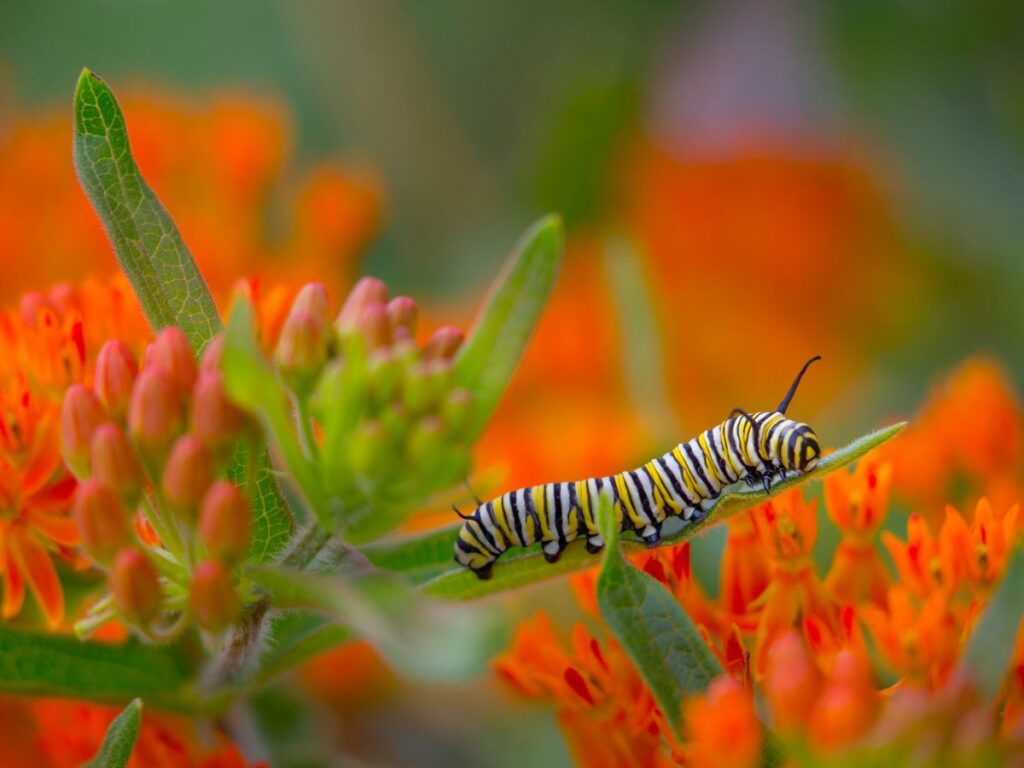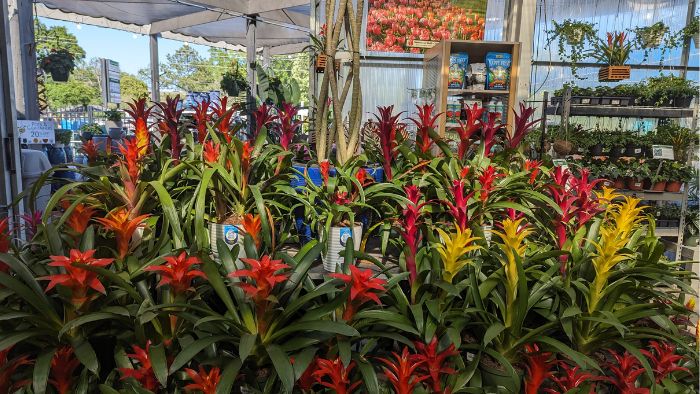More than pollination or nector, host plants are crucial for the continuation of a species. For Monarchs, that extra special plant used for food and laying eggs is the milkweed!
From the genus Asclepias, milkweeds are available in many varieties, with tons of colorful blooms to choose from. We even carry the native swamp milkweed when we can find it, and stock milkweed seeds year-round.

What is a Hostplant?
Hostplants aren’t a favorite choice for butterflies, they are the ONLY choice for many core functions of reproduction. In the case of monarchs and milkweeds, milkweeds offer even more benefits.
Milkweed plants produce a toxic substance called cardiac glycoside. Well, toxic to us, but not to the ever-hungry monarch caterpillar! They eat these poison leaves all day, making the bugs themselves unappealing to predators.

Plant Characteristics
Milkweeds grow wild in Louisiana, and the tropical varieties with vibrant red, orange, and yellow blooms survive just as well!
- Sun: Give your milkweeds full sun, at least 6 hours
- Water: Moderate watering, most milkweeds can do well in moist soil
- Height & Width: Milkweeds grow to about 3 feet tall, and have stalky growth without much spread.

What to Expect
Though the blooms are beautiful, most people are not planting these for the aesthetics. Monarch caterpillars – especially with individual plants – will quickly strip leaves. We suggest planting in groups of at least 3, but many more will help stave off total loss of vegetation.
More milkweeds = more time individual plants can recover and produce new leaves. The only downside? A whole lot more monarch butterflies!



